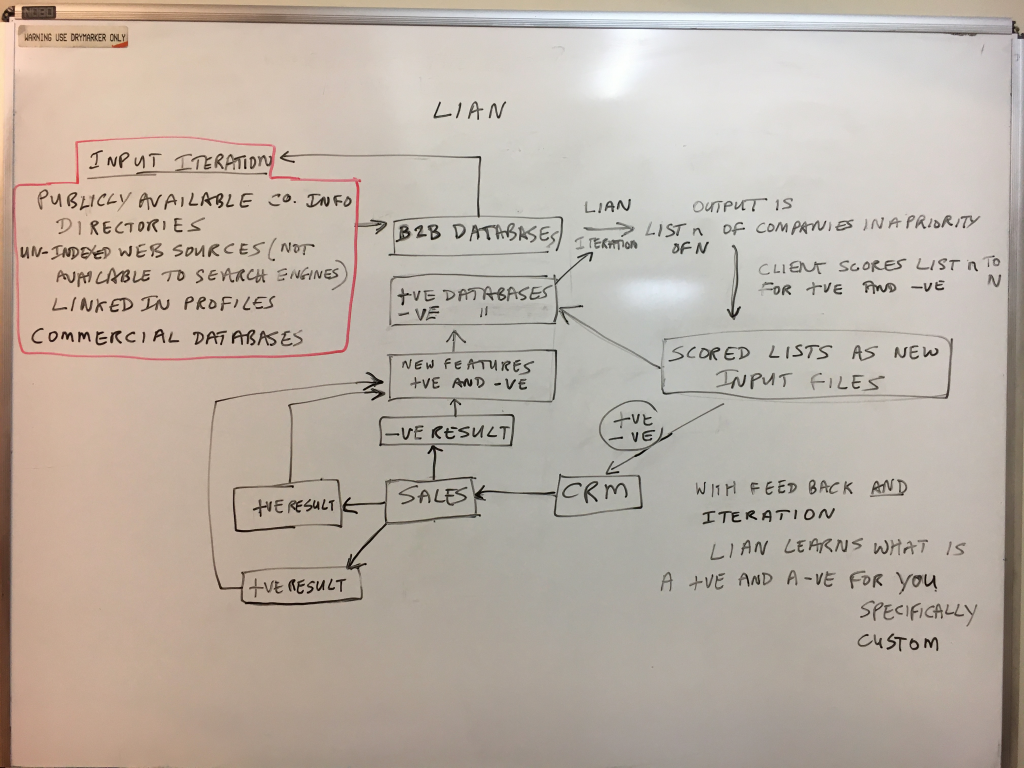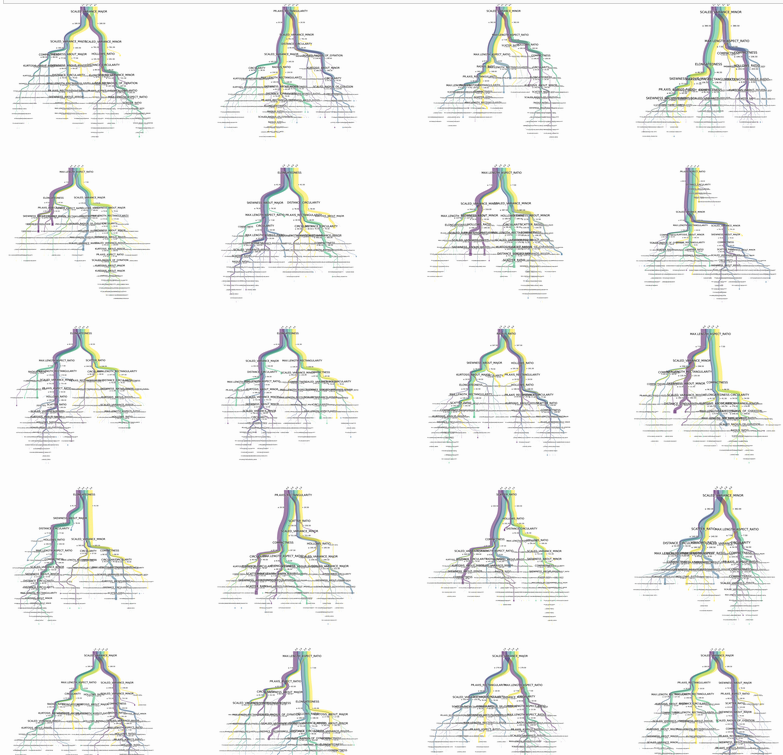Our system uses a tuned Decision Forest algorithm with positive and negative input data acting on specially curated B2B databases acting in a feedback loop so that learning takes place.
Feedback loops shape systems and organisations over time and to direct a complex system such as a sales organisation, Lian’s built in reinforcing loops and continual comparison to established baselines provides consistent “sanity checking” of new and existing information.
This means you obtain high data quality prospects and customer output because we have 100% control over what input data is collected and we control the format. This is vital because ML bugs are much trickier than traditional software bugs because rather than getting an error, you get degraded performance (and it’s not obvious what ideal performance is).
The diagram below outlines the process and feedback mechanism. A positive data point is a company the user wants to work with, a negative data point is a company the user does not want.
The data points are word and document vectors built from LinkedIn profiles, Common Crawl domains and commercial directories which the user classifies into +ve and -ve. Data input is mind mapped vectors and company information that is positive and negative.
The ML algorithm is a forest of decision trees that classify prospects into +ve and -ve. The averaged forest reduces the bias and variance in a single decision tree. The diagram below illustrates how the decision trees separate vectors into +ve and -ve. The output is a probability list of which prospects to target based on the input vectors.
Our proposed solution is innovative because it uses the combined domain knowledge of the user group (derived from mind-mapping of user inputs) to produce the output which is then scored and used as feedback. The scoring is a number given to the initial feature set. The output of one is used to direct the other in a reinforcing loop.
Many hundreds of trees are run on thousands of features (many times more than a human can consider simultaneously) and the algorithm learns which features are most important (without human biases) to achieve the objectives. Errors are balanced out because of the averaging of hundreds of trees.
The resulting AI can spot patterns that a human would never be able to see.
The ML system learns to do better by using the feedback scores to map to the important features. For example, a POC in the visitor attraction (VA) space began with museums and distilleries as initial inputs and expanded the output into aquariums, team events, flight shows and air shows.
As the feedback continues, the system begins to suggest new target markets and prospects, not previously thought of to approach, because it is using the pooled feedback and does not have the biases of the individuals.

